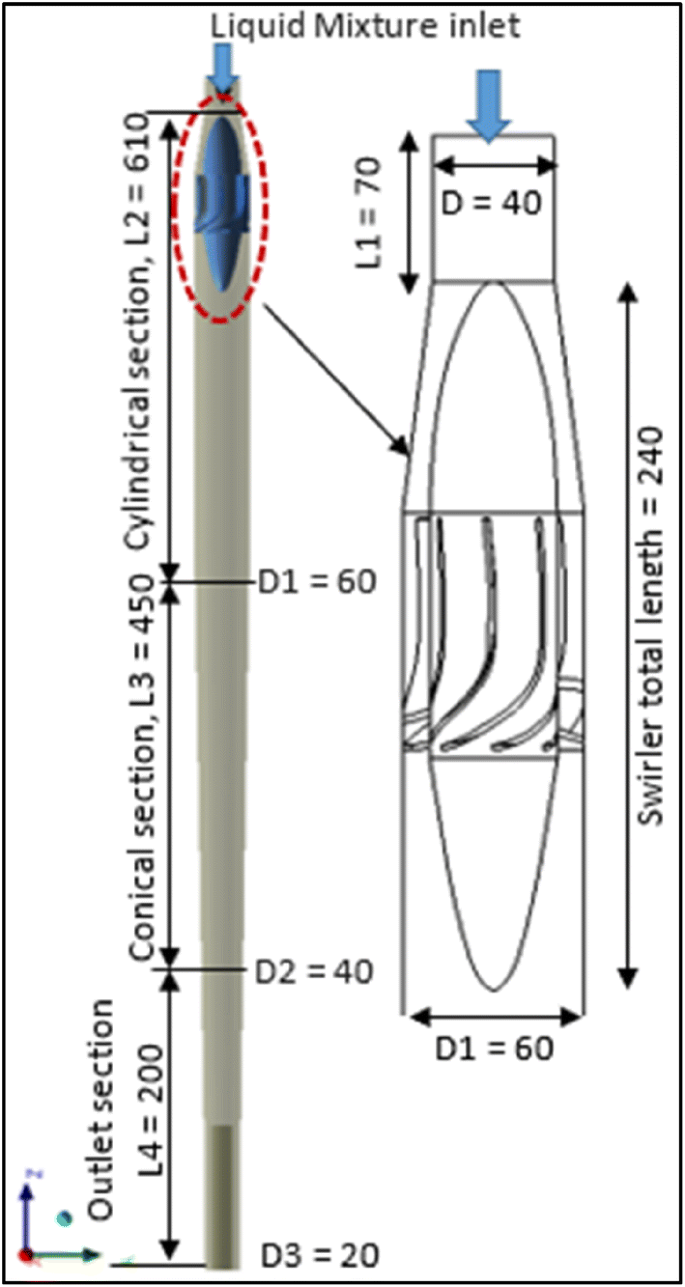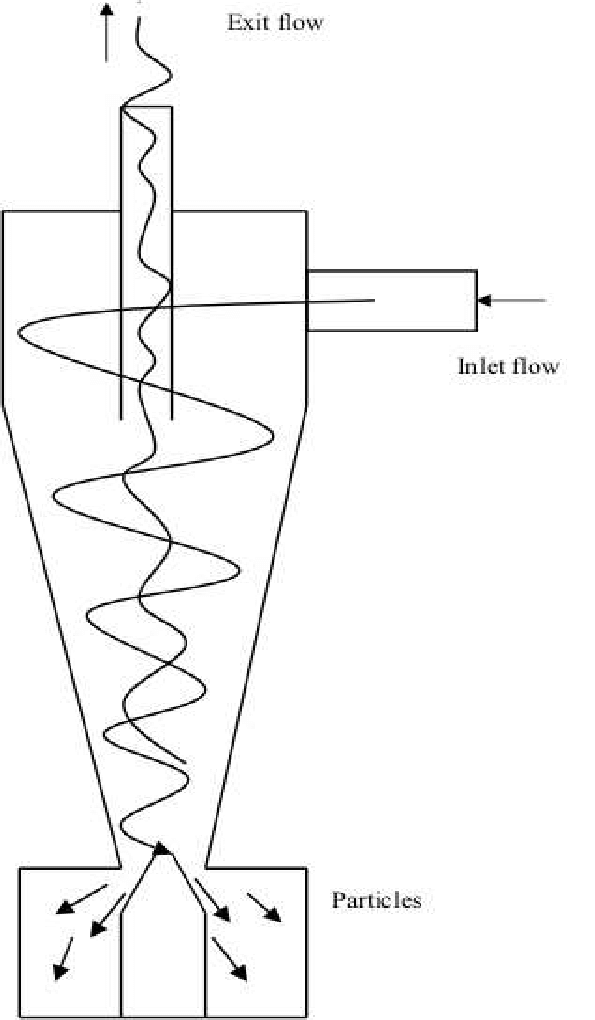- Cyclone Separator Design software, free download For Pc
- Cyclone Separator Design software, free download For Windows 7

Using our proprietary Sep-Calc™ software, you can simulate the client’s operating cases in a variety of separator arrangements to optimise the design concept, vessel size and internal components to meet the target performance characteristics.
Cyclone Separator Design software, free download For Pc

.Fig 1 cyclone separator. 1.1 The effect of particle size on cyclone separation The principal behind the cyclone separator is to use centrifugal force to separate phases of different densities. The fluid in the cyclone is forced to rotate rapidly so that the centrifugal acceleration causes the denser particles to. The Computer-Aided Design ('CAD') files and all associated content posted to this website are created, uploaded, managed and owned by third party users. Each CAD and any associated text, image or data is in no way sponsored by or affiliated with any company, organization or real-world item, product, or good it may purport to portray. Cyclonic or particle separation is a process used to extract specifically identified particulates from a fluid stream (air, gas or liquid). This cyclone separator design forgoes filters, and instead relies on vortex separation for the operation. These applications vary depending. The separation includes micro-bubbles, air bubbles and free air, particularly during filling and draining processes. Servitec degassing systems even degas dissolved gases in a vacuum. The process is electronically monitored and optimized by a Reflex Control unit.
Each module has been designed to be a simple, everyday tool for Process Engineers on a stand-alone basis. For this reason we provide the programs in MS-Excel format where the design outputs can be easily printed or saved to electronic pdf format.
To encourage the use of the Sep-Calc suite of programs within your organisation there are no complex dongles, security codes or passwords and the License is per Client Site with unlimited users. However, these are licensed products and not free-ware or share-ware and Clients must ensure under the License Terms that the software is securely retained for use in their own organisation only.
Cyclone Separator Design software, free download For Windows 7
| Title | Description |
| XSA-Calc | Calculates full and partial/segment vessel cross sectional areas. |
| XSV-Calc | Calculates full and partial vessel volumes for horizontal and vertical vessels. |
| RT-Calc | Calculates multi-level liquid volumes and residence times in horizontal and vertical vessels. |
| ME-Calc | Mist eliminator sizing estimation for typical mesh, vane and axial cyclone products. |
| XID-Calc | Sizing and selection of suitable inlet distributor for vertical and horizontal vessels. |
| KO-Calc | Liquid in gas droplet carryover calculator for horizontal and vertical vessels e.g. flare KO drums. |
| HSep-Calc | Basic horizontal gas/liquid separator sizing with nozzle velocities, pressure drops, level alarm settings, residence times, 2/3 phase options, demister sizing. |
| VSep-Calc | Basic vertical gas/liquid separator sizing with nozzle velocities, pressure drops, level alarm settings, residence times, 2/3 phase options, demister sizing. |
| HSep-Calc+ | Advanced horizontal gas/liquid separator sizing with Basic features plus performance checks for carryover in each phase. |
| SJ-Calc | Design of fluidized-bed sand jet system and calculation of required headers and nozzles. |
| PP-Calc | Sizing of plate coalescing pack for liquid/liquid separation enhancement. |
Visit the LOGIN page to register and download a demo program!

Visit the DOWNLOADS page to view the current brochure and price list!
Guidelines for Pressure Relief and Effluent Handling Systems (Guidelines)By: Center for Chemical Process Safety (CCPS)

ISBN-13: 9780816904761
Publisher: Wiley-AIChE - 1998-03-15
Hardcover | Bk&CD-Rom Edition | 540 Pages
Editorial Review:
Current industry, government and public emphasis on containment of hazardous materials makes it essential for each plant to reduce and control accidental releases to the atmosphere. Guidelines for Pressure Relief and Effluent Handling Systems meets the need for information on selecting and sizing pressure relief devices and effluent handling systems that will maintain process integrity and avoid discharge of potentially harmful materials to the atmosphere.
With a CD-ROM enclosed containing programs for calculating flow through relief devices, effluent handling systems, and associated piping, the book offers an important collection of state-of-the-art technology for safely relieving process equipment of such conditions as overpressure, overtemperature and/or runaway reactions. It provides information for two-phase and compressible gas flow to select and size pressure relief devices, piping, and effluent handling equipment, such as gravity separators, cyclones, spargers, and quench pools. The book has an important collection of state-of-the-art technology for safely relieving process equipment of conditions such as overpressure, overtemperature and/or run-away reactions. It provides information for two-phase and compressible gas flow to select and size pressure relief devices, piping, and effluent handling equipment such as gravity separators cyclones, spargers and quench pools.
Table of *******s:
Preface.
Acknowledgments.
Acronyms and Abbreviations.
1. Introduction.
1.1 Objective.
1.2 Scope.
1.3 Design Codes and Regulations, and Sources of Information.
1.4 Organization of This Book.
1.5 General Pressure Relief Systems Design Criteria.
1.5.1 Process Hazards Analysis.
1.5.2 Process Safety Information.
1.5.3 Problems Inherent in Pressure Relief and Effluent Handling System Design.
2. Relief Design Criteria and Strategy.
2.1 Limitations of the Technology.
2.2 General Pressure Relief Strategy.
2.2.1 Mechanism of Pressure Relief.
2.2.2 Approach to Design.
2.2.3 Limitations of Systems Actuated by Pressure.
2.2.4 Considerations of Consequences.
2.3 Codes, Standards, and Guidelines.
2.3.1 Scope of Principal USA Documents.
2.3.2 General Provisions.
2.3.3 Protection by System Design.
2.4 Relief Device Types and Operation.
2.4.1 General Terminology.
2.4.2 Pressure Relief Valves.
2.4.3 Rupture Disk Devices.
2.4.4 Devices in Combination.
2.4.5 Miscellaneous Nonreclosing Devices.
2.4.6 Miscellaneous Low-Pressure Devices.
2.4.7 Miscellaneous Relief System Components.
2.4.8 Selection of Pressure Relief Devices.
2.5 Relief System Layout.
2.5.1 General Code Requirements.
2.5.2 Pressure Relief Valves.
2.5.3 Rupture Disk Devices.
2.5.4 Low-Pressure Devices.
2.5.5 Series/Parallel Devices.
2.5.6 Header System.
2.5.7 Mechanical Integrity.
2.5.8Material Selection.
2.5.9 Drainage and Freeze-up Provisions.
2.5.10 Noise.
2.6 Design Flows and Code Provisions.
2.6.1 Safety Valves.
2.6.2 Relief Valves.
2.6.3 Low Pressure Devices.
2.6.4 Rupture Disk Devices.
2.6.5 Devices in Combination.
2.6.6 Miscellaneous Nonreclosing Devices.
2.7 Scenario Selection Considerations.
2.7.1 Events Requiring Relief Due to Overpressure.
2.7.2 Design Scenarios.
2.8 Fluid Properties and System Characterization.
2.8.1 Data Sources/Determination/Estimation.
2.8.2 Pure-Component Properties.
2.8.3 Mixture Properties.
2.8.4 Phase Behavior.
2.8.5 Chemical Reaction.
2.8.6 Miscellaneous Fluid Characteristics.
2.9 Fluid Behavior in Vessel.
2.9.1 Accounting for Chemical Reaction.
2.9.2 Two-Phase Venting Conditions and Effects.
2.10 Flow to Fluids through Relief Systems.
2.10.1 Conditions for Two-Phase Flow.
2.10.2 Nature of Compressible Flow.
2.10.3 Stagnation Pressure and Critical Pressure Ratio.
2.10.4 Flow Rate to Effluent Handling System.
2.11 Relief System Reliability.
2.11.1 Relief Device Reliability.
2.11.2 System Reliability.
Appendix 2A. International Codes and Standards.
Appendix 2B. Property Mixing Rules.
Appendix 2C. Code Case: Protection by System Design.
3. Relief System Design and Rating Computations.
3.1 Introduction.
3.1.1 Purpose and Scope.
3.1.2 Required Background.
3.2 Vessel Venting Background.
3.2.1 General.
3.2.2 material and Energy Balances.
3.2.3 Phase Behavior.
3.2.4 Two-Phase Venting Technology.
3.2.5 Methods of Solution.
3.3 Venting Requirements for Nonreacting Cases.
3.3.1 Thermal Expansion.
3.3.2 Fire Exposure.
3.3.3 Loss of Heating/Cooling Control.
3.3.4 Excess Inflow/Outflow.
3.3.5 Structural Failure.
3.3.6 Loss of Agitation.
3.3.7 Miscellaneous.
3.4 Vent Rate for Reacting Systems.
3.4.1 General.
3.4.2 Computer Simulations.
3.4.3 Special-Case Integral Equations.
3.5 Computational Strategy and Tools for Relief Flow.
3.5.1 Gas/Vapor Flow.
3.5.2 Two-Phase Flow.
3.5.3 Nozzle and Piping Configuration for COMFLOW and TPHEM.
3.6 Relief System Sizing and Rating.
3.6.1 Pipe Runs.
3.6.2 Safety Relief Valve Systems.
3.6.3 Liquid Relief Valve Systems.
3.6.4 Miscellaneous Low-Pressure Devices.
3.6.5 Rupture Disk Device Systems.
3.6.6 Devices in Combination.
3.6.7 Miscellaneous System Elements.
3.6.8 Header Systems.
3.7 Reaction Forces/Thrust.
3.7.1 Background Theory.
3.7.2 Selection of Design case.
3.7.3 Design Methods.
Appendix 3A. Vessel Venting Technology and Data Acquisition.
3A.1 System Schematic and Principal Parameters.
3A.2 Basic Material and Energy Balances.
3A.2.1 Vent Rate Criterion.
3A.2.2 Energy and Material Balance.
3A.3 Phase Behavior.
3A.3.1 General-Case Phase Equilibrium.
3A.3.2 Component Classification.
3A.3.3 Nonequilibrium Phenomena.
3A.4 Two-Phase Venting Technology.
3A.4.1 Coupling Equation.
3A.4.2 Holdup Correlations.
3A.4.3 Tests for Two-Phase Venting.
3A.5 Pressure Rise from Thermal Expansion.
3A.6 Runaway Reaction Calorimeters.
3A.6.1 Device Characteristics.
3A.6.2 Data Interpretation.
3A.7 Relief Rate by Computer Simulation.
3A.7.1 Fire Exposure.
3A.7.2 Runaway Reaction.
Appendix 3B. Relief System Sizing Background.
3B.1 Scope.
3B.2 Fluid Flow fundamentals.
3B.2.1 Flow in Nozzles.
3B.2.2 Pipe and Fittings.
3B.2.3 Conditions at Maximum Flow.
3B.3 Physical Property Treatment.
3B.3.1 Input to TPHEM.
3B.3.2 Relationships for Analytical Integration.
3B.4 Computation Strategies.
3B.4.1 Numerical Integration.
3B.4.2 Analytical Integrals for Homogeneous Flow.
3B.4.3 Computer Programs.
Appendix 3C. Example System Rating Simulation.
3C.1 Fire Exposure Example.
3C.2 Runaway Reaction Example.
Appendix 3D. Final Device Specs Required for Purchase.
4. Selection of Equipment for Handling Emergency Relief Effluent.
4.1 General Strategy.
4.2 Basis for Selection of Equipment.
4.3 Determining What May Be Discharged to the Atmosphere Safely.
4.4 Factors that Influence Selection of Effluent Treatment Systems.
4.4.1 Physical and Chemical Properties.
4.4.2 Two-Phase Flow and Foaming.
4.4.3 Passive versus Active Systems.
4.4.4 Technology Status and Reliability.
4.4.5 Discharging to a Common collection System.
4.4.6 Plant Geography.
4.4.7 Space Availability.
4.4.8 Turndown.
4.4.9 Need for Vapor-Liquid Separation.
4.4.10 Possible Condensation and Steam-water Hammer.
4.4.11 Time Availability.
4.4.12 Capital and Continuing Costs.
4.5 Methods of Effluent Handling.
4.5.1 Containment.
4.5.2 Discharge to Atmosphere.
4.5.3 Vapor-Liquid Separators.
4.5.4 Quench Pools.
4.5.5 Scrubbers (Absorbers).
4.5.6 Flares.
5. Design Methods for Handling Effluent from Emergency Relief Systems.
5.1 Design Basis Selection.
5.2 Total Containment Systems.
5.2.1 Containment in Original Vessel.
5.2.2 Containment in External Vessel (Dump Tank or Catch Tank).
5.3 Relief Devices, Discharge Piping, and Collection Headers.
5.3.1 Limitations on Combining Multiple Relief Discharges into Common Headers.
5.3.2 Pressure Drop Guidelines.
5.3.3 Discharge Piping Design Pressure.
5.3.4 Materials of Construction.
5.3.5 Location of Relief Devices.
5.3.6 Mechanical Design.
5.3.7 Separation of Headers Based on Temperature and Pressure.
5.4 Vapor-Liquid Gravity Separators.
5.4.1 Separator Inlet Velocity Considerations.
5.4.2 Horizontal Gravity-Type Separators.
5.4.3 Vertical Gravity Separators.
5.4.4 Separator Safety Considerations and Features.
5.4.5 Separator Vessel Design and Instrumentation.
5.5 Cyclones.
5.5.1 Droplet Removal Efficiency.
5.5.2 Design Procedure.
5.5.3 Cyclone Separator Sizing Procedure.
5.6 Quench Pools.
5.6.1 Design Procedure Overview.
5.6.2 Design Parameter Interrelations.
5.6.3 Quench Pool Liquid Selection.
5.6.4 Quench Tank Operating Pressure.
5.6.5 Quench Pool Heat Balance.
5.6.6 Quench Pool Dimensions.
5.6.7 Sparger Design.
5.6.8 Handling Effluent from Multiple Relief Devices.
5.6.9 Reverse Flow Problems.
5.6.10 Steam/Water Hammer.
5.6.11 Mechanical Design Loads.
5.6.12 Quench Tank with Effluent Scrubber.
5.7 Scrubbers (Absorbers).
5.7.1 General Comments and Background.
5.7.2 Special Requirements for Emergency Scrubbers.
5.7.3 Scrubbing (Absorption) Mechanisms Considerations.
5.7.4 Scrubbers Design Methodology.
5.7.5 Mechanical Design Considerations.
5.8 Release to Atmosphere.
5.8.1 Stack Location and Elevation.
5.8.2 General Design Considerations.
5.8.3 Dispersion Criteria and Stack Diameter.
5.8.4 Noise and Velocity Limitations.
5.9 Flare Systems.
5.9.1 General Comments and Considerations.
5.9.2 EPA Requirements.
5.9.3 Elevated Flare System Design Criteria.
5.9.4 Safety, Blockage, and Freeze-Up Issues.
5.9.5 Materials of Construction.
Appendix 5A.
5A.1 Examples Problem.
5A.2 Given Conditions.
5A.3 Quench Pool Design.
5A.3.1 Heat Balance.
5A.3.2 Sizing the Quench Pool Vessel.
5A.3.3 Sizing the Sparger.
5A.3.4 Size Manifold and Distributor.
5A.4 Gravity Separator Design.
5A.4.1 Piping Size.
5A.4.2 Horizontal Separator Design.
5A.4.3 Vertical Separator Design.
5A.5 Cyclone Separator Design.
Summary.
References.
Glossary.
Index.
 Download
Download